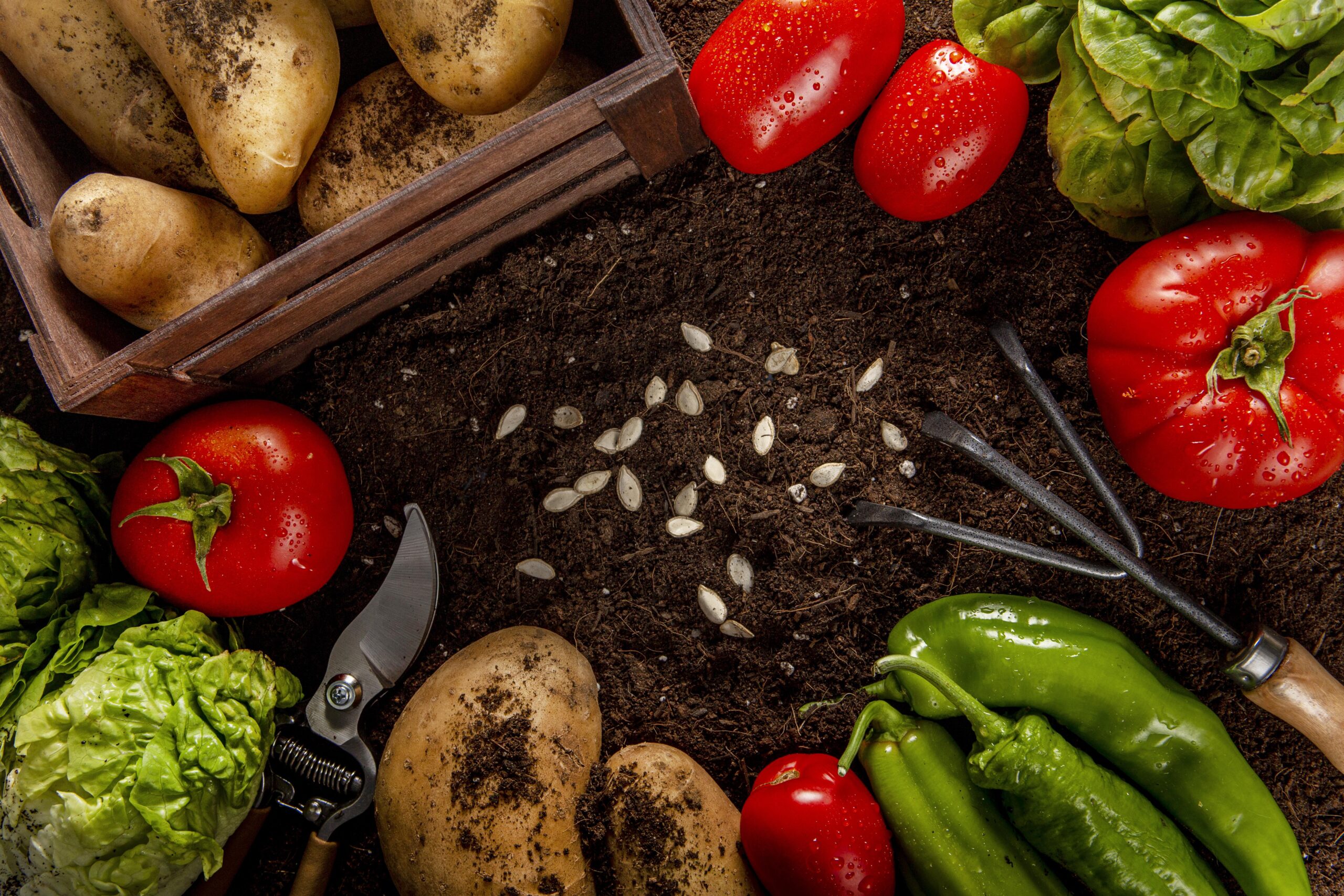Organic gardening is a rewarding endeavor that not only nurtures plants but also supports the environment. Choosing the best organic fertilizer is crucial for enhancing soil health, improving plant growth, and ensuring bountiful harvests. This article provides a comprehensive guide to understanding organic fertilizers, exploring top-rated options, and offering practical tips for application and homemade solutions. Whether you’re a seasoned gardener or just starting your green journey, this resource will equip you with the knowledge to make informed decisions for your garden.
Organic fertilizer is derived from natural sources, such as plant and animal materials, and is used to enrich soil and provide essential nutrients to plants. Unlike synthetic fertilizers, organic options improve soil structure, enhance microbial activity, and promote sustainable gardening practices.
Definition and Benefits of Organic Fertilizer
- Natural Ingredients: Made from compost, manure, bone meal, and other organic materials.
- Soil Health Improvement: Enhances microbial life and soil structure.
- Slow Release of Nutrients: Provides a steady supply of nutrients over time.
- Environmental Safety: Non-toxic and safe for beneficial insects and wildlife.
- Better Plant Growth: Promotes healthier plants with improved resistance to pests and diseases.
Top 10 Best Organic Fertilizers for Home Gardens
When selecting an organic fertilizer, consider the specific needs of your plants and soil. Below are ten top-rated organic fertilizers, including their pros and cons, ideal uses, and NPK values.
1. Espoma Organic All-Purpose Fertilizer
- NPK Value: 8-4-4
- Pros: Versatile for various plants; slow-release formula.
- Cons: Higher initial cost.
- Ideal Uses: Vegetables, flowers, and shrubs.
2. Dr. Earth Organic Fertilizer
- NPK Value: 4-6-2
- Pros: Contains beneficial microbes; promotes healthy growth.
- Cons: Strong odor.
- Ideal Uses: Fruits, vegetables, and herbs.
3. Miracle-Gro Performance Organics
- NPK Value: 10-2-3
- Pros: Fast-acting; suitable for various plants.
- Cons: Some synthetic ingredients.
- Ideal Uses: Flower and vegetable gardens.
4. FoxFarm Happy Frog Fertilizer
- NPK Value: 5-5-5
- Pros: Rich in nutrients; promotes strong root development.
- Cons: Can be expensive.
- Ideal Uses: Indoor and outdoor plants.
5. Jobe’s Organics Vegetable Fertilizer
- NPK Value: 4-4-4
- Pros: Easy to use; ideal for vegetable gardens.
- Cons: May require frequent application.
- Ideal Uses: Vegetables and herbs.
6. Down to Earth Organic Fertilizer
- NPK Value: 6-2-2
- Pros: Balanced nutrient profile; eco-friendly.
- Cons: Requires mixing with soil.
- Ideal Uses: All types of plants.
7. Plant Tone by Espoma
- NPK Value: 5-3-3
- Pros: Specifically formulated for flowering plants.
- Cons: Limited to certain plant types.
- Ideal Uses: Flowers and ornamental plants.
8. Organic Plant Food by Greenway Biotech
- NPK Value: 10-10-10
- Pros: Well-balanced; suitable for all growth stages.
- Cons: May require dilution.
- Ideal Uses: General garden use.
9. Bone Meal Fertilizer
- NPK Value: 4-12-0
- Pros: High phosphorus content; promotes root growth.
- Cons: Slow acting.
- Ideal Uses: Bulbs and flowering plants.
10. Blood Meal Fertilizer
- NPK Value: 12-0-0
- Pros: High nitrogen content; fast-acting.
- Cons: Strong scent; can attract pests.
- Ideal Uses: Leafy greens and nitrogen-loving plants.
How to Choose the Right Organic Fertilizer for Your Plants
Selecting the best organic fertilizer depends on several factors, including the type of plants, soil conditions, and specific nutrient needs. Here are some criteria to consider:
- Plant Type: Different plants have varying nutrient requirements; leafy greens often need more nitrogen, while flowering plants benefit from phosphorus.
- Soil Quality: Conduct a soil test to determine nutrient deficiencies and pH levels.
- Application Method: Choose between granular, liquid, or slow-release fertilizers based on your gardening style.
- Environmental Impact: Opt for eco-friendly options that support biodiversity and soil health.
Step-by-Step Guide: Applying Organic Fertilizer
Applying organic fertilizer correctly ensures effective nutrient delivery to your plants. Follow these steps for optimal results:
Granular Fertilizer Application
- Determine the appropriate amount based on the product instructions and your soil test results.
- Evenly distribute the fertilizer around the base of the plants, avoiding direct contact with stems.
- Gently work the fertilizer into the top layer of soil.
- Water thoroughly to help activate the nutrients.
Liquid Fertilizer Application
- Mix the liquid fertilizer with water according to the manufacturer’s instructions.
- Apply the solution directly to the soil around the plants.
- Water the plants lightly afterward to prevent any potential burns.
Slow-Release Fertilizer Application
- Follow the recommended dosage on the product label.
- Spread the fertilizer evenly around the plants.
- Water the area to initiate the slow release of nutrients.
Soil, Light, and Water Needs When Using Organic Fertilizers
Understanding the environmental conditions of your garden is crucial for the effective use of organic fertilizers. Here are key considerations:
Soil Requirements
- Well-Drained Soil: Ensure your soil has good drainage to prevent nutrient runoff.
- pH Levels: Most plants thrive in slightly acidic to neutral pH (6.0 to 7.0).
- Organic Matter: Incorporate compost to improve soil structure and nutrient availability.
Light Requirements
- Full Sun: Most vegetables and flowering plants need at least 6 hours of sunlight daily.
- Partial Shade: Some plants, like leafy greens, can thrive in partial shade.
Watering Needs
- Consistent Moisture: Keep soil consistently moist but not waterlogged.
- Timing: Water early in the morning or late in the afternoon to reduce evaporation.
DIY Organic Fertilizer Recipes: Easy Options to Make at Home
Creating your own organic fertilizers can be cost-effective and rewarding. Here are three simple recipes:
Compost Tea
- Ingredients: A bag of compost, water.
- Instructions:
- Fill a bucket with water.
- Add the compost bag and let it steep for 24-48 hours.
- Strain the liquid and use it to water your plants.
Banana Peel Fertilizer
- Ingredients: Banana peels, water.
- Instructions:
- Chop banana peels into small pieces.
- Soak in water for 48 hours.
- Use the liquid to water your plants.
Eggshell Fertilizer
- Ingredients: Clean eggshells.
- Instructions:
- Rinse and dry eggshells.
- Crush them into a fine powder.
- Sprinkle the powder around your plants for a calcium boost.
Seasonal Checklist: When and How to Fertilize Organically
Timing is essential for successful organic fertilization. Here’s a seasonal checklist:
Spring Tasks
- Apply a balanced organic fertilizer to prepare the soil for planting.
- Incorporate compost to enhance soil structure.
Summer Tasks
- Reapply fertilizer every 4-6 weeks for continuous growth.
- Monitor plants for signs of nutrient deficiency.
Fall Tasks
- Apply a slow-release fertilizer to prepare for winter.
- Add organic matter to improve soil for the next growing season.
Winter Tasks
- Mulch garden beds to protect soil and retain moisture.
- Plan for spring fertilization based on soil tests.
Common Issues
Even with the best practices, issues may arise in the garden. Here’s how to address common problems:
Pest Management
- Natural Deterrents: Use neem oil or insecticidal soap to control pests.
- Beneficial Insects: Introduce ladybugs and lacewings to manage aphid populations.
Disease Prevention
- Crop Rotation: Rotate crops annually to prevent soil-borne diseases.
- Cleanliness: Remove dead plant material to reduce disease spread.
Nutrient Deficiencies
- Yellowing Leaves: May indicate nitrogen deficiency; apply a nitrogen-rich fertilizer.
- Stunted Growth: Could be due to phosphorus deficiency; consider bone meal.
Essential Tools and Safety Tips for Organic Fertilizer Application
Using the right tools and following safety precautions can enhance your gardening experience. Here’s what you need:
Essential Tools
- Garden Gloves: Protect your hands during application.
- Measuring Cup: Ensure accurate fertilizer measurements.
- Watering Can: For applying liquid fertilizers.
- Shovel or Trowel: Useful for mixing and applying granular fertilizers.
Safety Precautions
- Read Labels: Follow instructions carefully to avoid over-application.
- Store Safely: Keep fertilizers out of reach of children and pets.
- Wear Protective Gear: Use gloves and masks when handling strong-smelling fertilizers.

